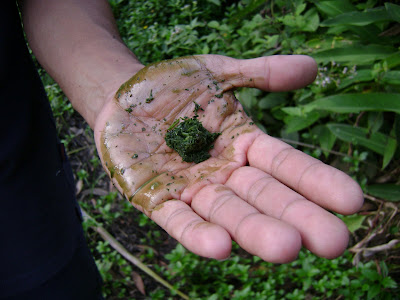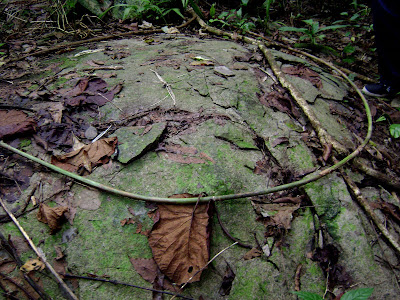Nancy paid Yew Moi and me a visit after an absence of four years. This time she had met up with her niece, Sarah, who was on her way back to Australia from France, to spend some time in Malaysia.
We got to know Nancy when she was in Batu Pahat in the mid 70’s as a Peace Corps teacher in High School Batu Pahat. Her 3 year stint in Malaysia had somehow rubbed onto her skin that she has made several trips since then to Malaysia after her return to the US. I couldn’t help but wonder in awe how she could have kept up with the Malay language after more than 20 years. You will know what I mean when you read part of her email:
Dear Yew Moi, Chang Ngee, and my AustraloAmerican niece Sarah,
Kepada sahabat2 yang jauh, Lee Chang Ngee dan Ng Yew Moi, dengan surat email ini saya hendak beritahu anda bahawa saya akan pergi ke Malaysia dalam Januari. Saya akan jumpa Sarah di Singapura, boleh jadi makan angin di sana semasa satu atau dua hari. Lepas itu pergi ke Malaysia ke Batu Pahat dan tempat2 lain. Mungkin saya hendak pergi ke Sarawak, hendak jalan-jalan ke Kuching, Miri, Brunei (?). Umor Sarah tahun 21 atau 22 dan dia bahru keluar universiti di Lyons, France. Saya belum dapat rancangan kapalterbang, tetapi akan gunakan United Airlines sebab ada "Mileage Plus" award yang sudah naik dan sekarang saya boleh pilih flight bebas antarabangsa. Berharap anda boleh faham bahasa Malaysia saya--lah!
Why do non-Malay kids find it so difficult to learn the Malay Language even after so many years in school? The answer is 'attitude'. Nancy came with a mind open and willing to absorb all things strange and wonderful. Yew Moi, Nancy and Sarah
Yew Moi, Nancy and Sarah We ordered 'choy sum' stirr-fried with garlic
We ordered 'choy sum' stirr-fried with garlic Three strips of juicy deep-fried pork ribs
Three strips of juicy deep-fried pork ribs Thin gloves with which to eat the pork-ribs
Thin gloves with which to eat the pork-ribs The fried omelette with shrimps, minced pork, thin slices of Chinese sausage and onions
The fried omelette with shrimps, minced pork, thin slices of Chinese sausage and onions Clay pot mixed vegetables, shrimps and slivers of pork
Clay pot mixed vegetables, shrimps and slivers of porkFor nostalgic reason, we had Tiger; no Carlsberg, Heineken or Tsing Tao beer for us. The first locally brewed beer, Tiger was featured prominently in Anthony Burgess’ book, ‘The Malayan Trilogy’. The meal, excluding Tiger came to RM 48.
 Tiger
Tiger


















































